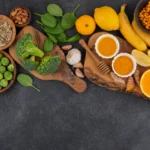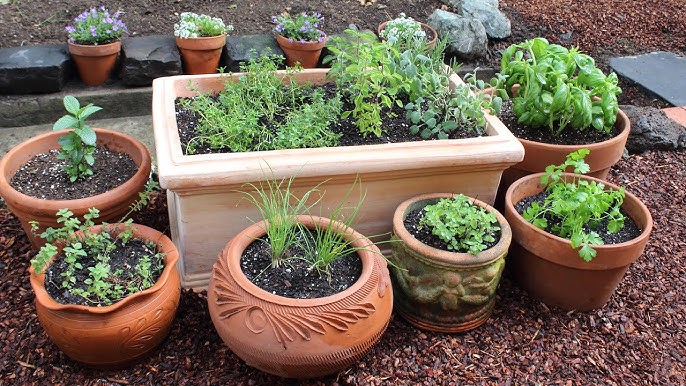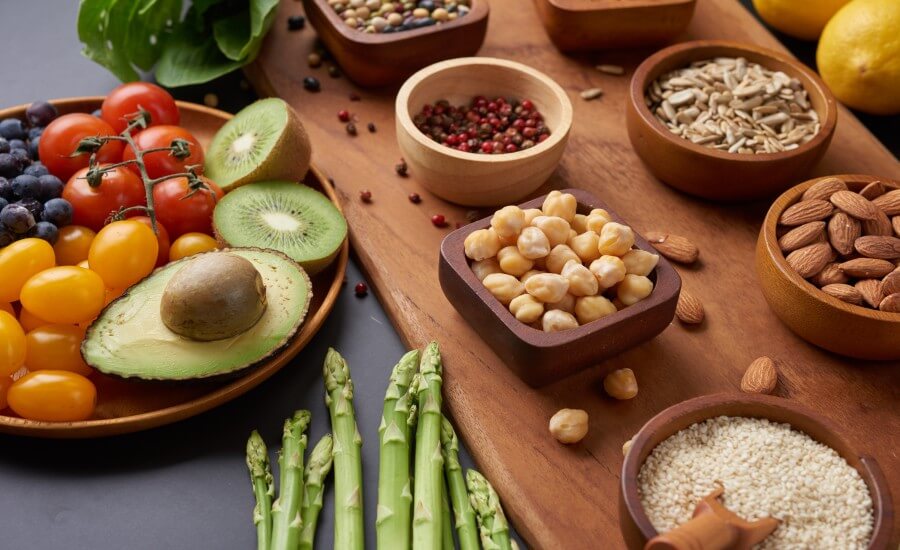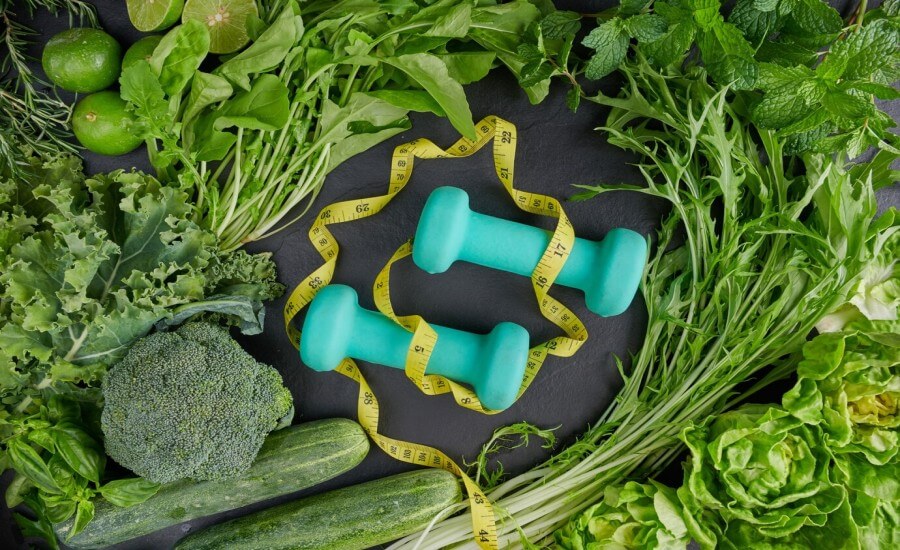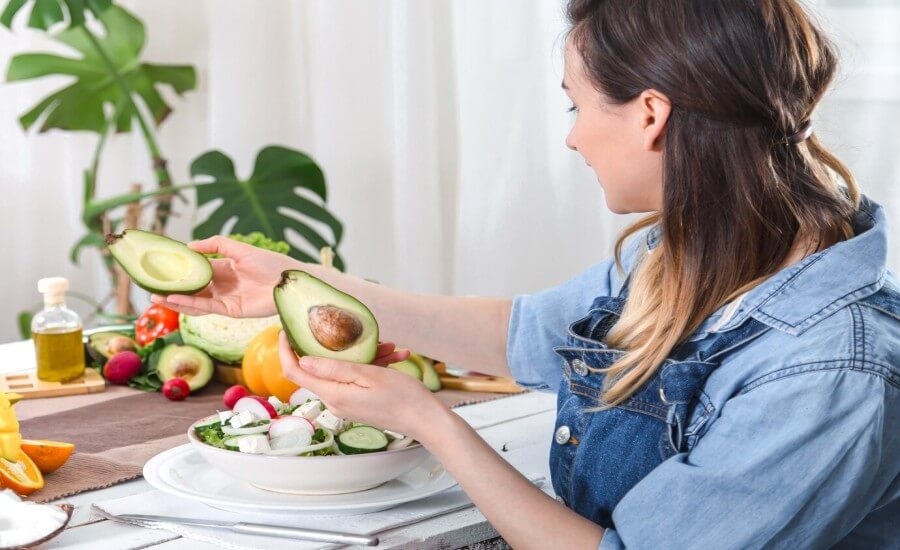Imagine stepping onto your balcony or reaching over to your windowsill to snip fresh, aromatic basil for your pasta, fragrant mint for your chai, or vibrant coriander to garnish your dal. Growing your own herbs at home is incredibly rewarding! It brings intense flavor to your cooking, saves money, reduces plastic packaging waste, and fosters a wonderful connection to the food you eat.
This guide focuses specifically on creating a vegan herb garden. This means ensuring everything that goes into nurturing your plants aligns with vegan ethics – from the soil and fertilizer to pest control. And the best part? You don’t need a sprawling backyard! A sunny windowsill or a small balcony is all it takes to get started.
Why a Vegan Herb Garden Matters
For those following a vegan lifestyle, extending those principles to gardening makes perfect sense. It gives you complete control over what goes into the soil your food grows in. Conventional gardening often relies on animal-derived products like:
- Bone meal (ground animal bones)
- Blood meal (dried animal blood)
- Fish emulsion (liquid fertilizer from fish waste)
- Animal manures (from potentially factory-farmed animals)
A vegan garden avoids these, relying instead on plant-based and mineral inputs.
- Vegan Gardener’s Note: Don’t worry, growing herbs veganically is simple and effective. Plants thrive on plant-based nutrients!
Choosing Your Herbs: Flavor & Feasibility
Start with herbs you love to cook with and that are relatively easy to grow in pots. Here are some excellent choices, especially considering suitability for home gardens and vegan cuisine:
- Herb Spotlight:
- Basil (Tulsi & Sweet Varieties): Loves heat and sun. Essential for Italian and Thai dishes, pestos, and holy basil (Tulsi) is revered and used in teas. Pinch tips frequently to encourage bushy growth.
- Mint (Pudina): Thrives in heat, but contain it! Mint spreads vigorously, so keep it in its own pot. Perfect for chutneys, raita, teas, and refreshing drinks. Very easy to grow.
- Coriander (Dhania/Cilantro): Prefers milder weather. Leaves are essential in Indian, Mexican, and Asian cooking. Harvest outer leaves regularly. Tends to “bolt” (flower and go to seed) quickly in heat.
- Parsley (Curly & Flat-leaf): Versatile for garnishes, salads (like tabbouleh), and sauces. Likes sun but benefits from some afternoon shade in intense heat.
- Rosemary: A woody, perennial herb. Needs full sun and excellent drainage. Drought-tolerant once established. Fantastic with roasted vegetables and potatoes.
- Thyme: Small-leaved and aromatic. Needs full sun and good drainage. Hardy. Great in soups, stews, and Mediterranean dishes.
- Oregano: Another Mediterranean favorite. Loves sun and well-drained soil. Essential for pizza, pasta sauces, and Greek salads.
- Chives: Offer a mild, fresh onion flavor. Likes sun. Snip the hollow leaves as needed. The purple flowers are edible and pretty in salads!
- Curry Leaves (Kadi Patta): Essential for South Indian cooking. Needs warmth and sunlight. Can grow quite large but stays manageable in a pot for some time. Prized for tempering dals and chutneys.
- Climate Check (Vadodara, May): Right now, Vadodara is experiencing peak summer heat before the monsoon.
- Good choices for outdoors now: Basil, Mint, Curry Leaves, Rosemary (ensure good drainage!), Oregano, Thyme will generally handle the heat well, provided they get adequate water and potentially some relief from scorching afternoon sun (1-4 PM).
- Consider starting indoors or waiting: Coriander and Parsley may struggle or bolt quickly in extreme heat. You could try starting them indoors near a bright window or wait until the monsoon brings slightly moderated temperatures.

Finding the Perfect Spot: Sun & Shelter
- Sunlight Needs: Most herbs are sun-worshippers, needing at least 5-6 hours of direct sunlight each day to thrive and develop good flavor. A South or West-facing balcony or windowsill is often ideal in India.
- Location Options: Even small spaces work!
- Windowsill: Suitable for smaller pots.
- Balcony: Offers more space for various pot sizes, railings for hanging planters, or even vertical gardening setups.
- Patio/Terrace: Allows for larger containers.
- Heat Protection (Crucial in May): While many herbs like sun, the intense midday/afternoon sun in Indian summers can be too much. If leaves look scorched or wilted despite adequate watering, provide some temporary shade. This could be positioning pots so taller plants shade smaller ones, or moving them slightly during the hottest part of the day.
Pots & Containers: Homes for Your Herbs
- Size Matters: Don’t cramp your herbs! Choose pots that accommodate their root systems. Start small (6-8 inch diameter) for most herbs, but give mint and rosemary a bit more space (8-10 inches+) as they grow.
- Drainage is Non-Negotiable: This is vital! Ensure every pot has holes at the bottom to let excess water escape. Herbs hate sitting in soggy soil (leads to root rot). Place pots on saucers to catch water, but empty the saucers after watering.
- Material Choices:
- Terracotta (Clay): Porous, allows airflow, looks natural. Dries out faster, needing more frequent watering in hot weather.
- Plastic: Lightweight, retains moisture longer, often cheaper. Choose thicker, UV-resistant types if possible.
- Glazed Ceramic: Decorative, retains moisture well. Can be heavier.
- Fabric Grow Bags: Excellent aeration, good drainage, prevent root circling. Can dry out quickly.

The Foundation: Vegan Soil & Amendments
Creating a healthy, living soil mix without animal products is easy!
- Potting Mix Base: Look for commercially available potting mixes that are peat-free and based on coco coir (coconut fibre). Read the ingredients list carefully – avoid mixes listing generic “forest products” or non-vegan fertilizers (like blood/bone meal). Many local nurseries in India now stock coco peat based mixes.
- Vegan Compost: This is decomposed plant matter – fruit/veg scraps, leaves, coffee grounds, tea leaves, garden trimmings. You can buy bagged plant-based compost (check the source/ingredients) or make your own! Avoid adding animal manures unless you are certain of the source and comfortable with it ethically.
- Vermicompost (Worm Castings): Produced by earthworms breaking down organic matter. Widely considered acceptable by many vegans, as it’s a natural process utilising waste. Check the producer’s feeding practices if concerned. It’s an excellent soil conditioner.
- Improving Drainage: Herbs like Rosemary, Thyme, and Oregano particularly need sharp drainage. Mix perlite (volcanic glass puffs), coarse sand, or fine gravel into your coco coir/compost mix to improve aeration and prevent waterlogging.
- Vegan Gardener’s Note: A good starting mix could be: 2 parts coco coir, 1 part vegan compost, and 1 part perlite/sand (adjust drainage based on the herb).

Planting Time: Seeds vs. Starts
- From Seeds: Economical, offers more variety. Follow seed packet instructions for planting depth and spacing. Keep soil consistently moist for germination. You might need to thin seedlings later. Starting seeds indoors can give sensitive plants a head start away from harsh weather.
- From Starter Plants: Available at local nurseries. Easiest for beginners, provides faster results. Choose healthy-looking plants. Gently tease out any tightly bound roots before planting into your prepared pot at the same depth it was in its nursery container.
Nurturing Your Greens: Care & Maintenance
- Watering Wisdom:
- Check First: Don’t water on a schedule. Stick your finger about an inch into the soil. If it feels dry, it’s time to water. If moist, wait.
- Water Thoroughly: When you water, water deeply until it flows out the drainage holes. This encourages deep root growth.
- Avoid Soggy Feet: Empty saucers after watering.
- Hot Weather Alert (May): Check soil moisture daily during hot, dry periods. Plants in pots, especially terracotta, dry out quickly. Water early in the morning or late in the evening to minimize evaporation.
- Sunlight Savvy: Ensure your herbs get their required hours of sun. Rotate pots weekly so all sides get light. If plants look leggy (long stems, few leaves), they probably need more light.
- Vegan Feeding: Herbs aren’t heavy feeders. Over-fertilizing can actually reduce flavor intensity.
- Use a diluted liquid vegan fertilizer every 4-6 weeks during the main growing season. Options include:
- Seaweed extract (check it’s processed without non-vegan chemicals).
- Certified vegan plant food brands (becoming more available).
- Compost tea (steep a handful of vegan compost in water for 24 hours, strain, dilute).
- Top dress (add a thin layer on top of the soil) with fresh vegan compost once or twice a year.
- Use a diluted liquid vegan fertilizer every 4-6 weeks during the main growing season. Options include:
- Harvesting Happiness: Regular harvesting encourages more growth!
- Pinch & Snip: For herbs like Basil, Mint, Oregano, pinch or snip off the top few leaves and stem tips, just above a set of leaves. This encourages branching.
- Outer Leaves First: For Parsley and Coriander, harvest the larger, outer stems first, letting the inner leaves continue to grow.
- Moderation: Never remove more than about one-third of the plant’s foliage at any single time.
- Flavor Peak: Harvest herbs in the morning after dew has dried for the best flavor and essential oil concentration. Harvest before they flower for strongest leaf flavor (though some flowers like chive blossoms are edible!).

Troubleshooting (The Vegan Way)
- Common Pests (Aphids, Mealybugs, Spider Mites):
- Physical Removal: A strong jet of water from a spray bottle can dislodge many pests. Wipe leaves (top and bottom) with a damp cloth. Handpick larger pests.
- Neem Oil Spray: A broad-spectrum natural insecticide and fungicide derived from the neem tree (widely available in India). Mix as directed and spray leaves thoroughly (including undersides), preferably in the evening.
- Insecticidal Soap: Use a commercially available one based on potassium salts of fatty acids (ensure no animal fats). Or make a very dilute solution of plain liquid soap (not detergent) and water. Test on a small area first.
- Diseases (e.g., Powdery Mildew):
- Prevention: Ensure good air circulation between plants (don’t overcrowd). Water the soil directly, avoiding wetting the leaves unnecessarily.
- Treatment: Prune off affected leaves immediately. Improve air circulation. Neem oil can also help manage fungal issues.
- Troubleshooting Tip: The best defense is a healthy plant! Providing the right conditions (sun, water, soil, air circulation) makes herbs much more resilient.
Reaping the Rewards: Using Your Harvest
This is the ultimate payoff! Freshly picked herbs elevate any vegan dish:
- Stir basil into pasta sauce or blend into pesto.
- Muddle mint for drinks, blend into green chutney, or brew fresh tea.
- Chop coriander generously over dals, curries, salads, and poha.
- Sprinkle parsley on almost anything for freshness.
- Roast potatoes or veggies with rosemary sprigs.
- Add thyme and oregano to soups, stews, pizzas, and roasted vegetables.
- Snip chives over tofu scramble, salads, or vegan sour cream.
- Temper curry leaves in hot oil with mustard seeds for authentic South Indian flavor.

Conclusion
Starting your own vegan herb garden at home is a simple, joyful, and incredibly flavorful endeavor. Even if you only have a small balcony or windowsill, you can enjoy the magic of harvesting your own fresh herbs. Begin with a few of your favorites, provide them with the right conditions using plant-based methods, and get ready to taste the difference that home-grown freshness makes in your vegan kitchen.
Happy Vegan Gardening!
FAQ: Indoor Gardening, Vegan Composting & Herb Growing
This FAQ addresses common questions inspired by guides on successful indoor gardening, vegan composting, specific herb cultivation (basil, mint, coriander, curry leaves), companion planting, and veganic gardening principles.
Q1: I’m new to indoor gardening. What are the most important tips for success?
A: For successful indoor gardening, focus on:
- Light: Most plants need adequate light. South-facing windows are often best, but grow lights can supplement.
- Watering: Understand each plant’s needs. Overwatering is a common mistake. Check soil moisture before watering.
- Drainage: Ensure pots have drainage holes to prevent root rot.
- Appropriate Soil: Use good quality potting mix suitable for your chosen plants.
- Air Circulation: Good airflow can prevent fungal issues.
- Start Small: Don’t overwhelm yourself. Begin with a few easy-to-care-for plants.
Q2: What is vegan composting, and how do I start it at home?
A: Vegan composting is the process of breaking down plant-based organic matter (fruit/vegetable scraps, leaves, coffee grounds, etc.) into a nutrient-rich soil amendment, without using any animal products (like manure, bones, or dairy).
To start:
- Choose a Bin: Use a suitable container with aeration (a dedicated compost bin, a bucket with holes, etc.).
- Balance “Greens” and “Browns”: Layer “greens” (nitrogen-rich food scraps, grass clippings) with “browns” (carbon-rich dried leaves, shredded paper/cardboard).
- Moisture & Aeration: Keep the pile moist (like a damp sponge) and turn it regularly to introduce oxygen.
- Avoid: Meat, dairy, oily foods, and animal manures.
Q3: Can you give me quick growing tips for basil, mint, coriander, and curry leaves indoors?
- Basil: Needs lots of sunlight (6-8 hours), warm temperatures, and well-drained soil. Water regularly, allowing soil to dry slightly between waterings. Pinch back tips to encourage bushiness.
- Mint: Very easy to grow. Prefers full sun to partial shade and consistently moist soil. It can be invasive, so grow it in its own pot. Harvest frequently.
- Coriander (Cilantro): Likes cooler temperatures and full sun to light shade. Needs well-drained soil. It can bolt (go to seed) quickly in hot weather. Harvest leaves regularly.
- Curry Leaves: A tropical plant that needs plenty of sunlight, warmth, and well-drained soil. Water when the topsoil is dry. It can be slow-growing, especially from seed. Protect from cold drafts.
Q4: What is companion planting, and how can it benefit my indoor herbs?
A: Companion planting is the practice of growing different plants in close proximity to benefit one or both. For herbs, benefits can include:
- Pest Deterrence: Some herbs repel pests that might attack others.
- Improved Growth/Flavor: Some pairings are thought to enhance growth or flavor (though this is often anecdotal).
- Attracting Beneficial Insects: If you have an indoor setup near an open window, some companions might attract pollinators or predatory insects.
- Efficient Use of Space: Taller plants can provide shade for those that prefer less direct sun.
Understanding which herbs grow well together can lead to a healthier and more productive indoor garden.
Q5: What are veganic gardening principles? How is it different from just organic gardening or vegan composting?
A: Veganic gardening (also known as “vegan organic” or “stock-free organic”) is a method of cultivation that uses only plant-based materials and avoids all animal inputs.
- Key Principles: Focus on building soil fertility using green manures, cover crops, vegetable compost, chipped branch wood, and plant-based liquid feeds. It emphasizes sustainability, biodiversity, and kindness to animals.
- Difference from Organic: Standard organic gardening often permits animal-derived inputs like manure, blood meal, or bone meal. Veganic gardening strictly excludes these.
- Difference from Vegan Composting: Vegan composting is one component of veganic gardening (providing plant-based fertilizer). Veganic gardening is the broader system and philosophy of growing food without any animal exploitation or inputs at any stage.
Q6: How much light do my indoor herbs generally need?
A: Most culinary herbs, like basil, mint, and coriander, thrive in at least 4-6 hours of direct sunlight per day. South-facing windows are ideal. If you don’t have enough natural light, consider supplementing with a grow light. Curry leaves also prefer bright light.
Q7: I’m worried about pests in my indoor garden. Any tips based on these principles?
- Healthy Plants: Strong, healthy plants are less susceptible to pests. Follow good watering, light, and soil practices.
- Companion Planting: As mentioned, some herbs can deter pests. For example, mint can repel ants and aphids.
- Veganic Principles: Focus on soil health. Healthy soil leads to healthy plants.
- Manual Removal: For small infestations, hand-picking pests or wiping them off with a damp cloth can be effective.
- Plant-Based Sprays: If needed, consider natural, plant-based pest deterrents like neem oil solution (ensure it’s pure and suitable for edibles).







